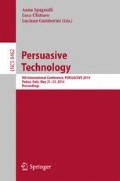Abstract
Recent disasters during major events have resulted in increased focus on influencing crowds, both during emergencies and under normal circumstances. In this exploratory study event experts were interviewed to uncover good practices regarding the use of technology to communicate with crowds.
They agree that, rather than using directive means and force, crowds can best be persuaded; proving relevant information enables them to decide for themselves what course of action to take. Some of the experts remain critical about use of social media at events; effectiveness depends on target group composition, visitors’ engagement in the event, and reliability. Additionally, the abundance of information visitors have at their fingertips may reduce effectiveness of information emitted by organisers. Especially important in communicating with crowds is “communicating as one”, not only pertaining to explicit messages but also to non-verbal communication.
Based on these results, implications for event safety are discussed.
Access this chapter
Tax calculation will be finalised at checkout
Purchases are for personal use only
Preview
Unable to display preview. Download preview PDF.
References
Reicher, S., Stott, C., Cronin, P., Adang, O.: An integrated approach to crowd psychology and public order policing. Policing 27, 558–572 (2004)
Durrheim, K., Foster, D.: Technologies of social control: Crowd management in liberal democracy. Economy and Society 28, 56–74 (1999)
Festinger, L.: Some consequences of deindividuation in a group. Journal of Abnormal and Social Psychology 47, 382–389 (1952)
Challenger, R., Clegg, C.W., Robinson, M.A., Leigh, M.: Understanding crowd behaviours. Supporting Theory and Evidence, vol. 2. Cabinet Office (2010)
Reicher, S.D., Spears, R., Postmes, T.: A Social Identity Model of Deindividuation Phenomena. European Review of Social Psychology 6, 161–198 (1995)
Lea, M., Spears, R., De Groot, D.: Knowing Me, knowing You: Anonymity effects on social identity processes within groups. Personality and Social Psychology Bulletin 27, 526–537 (2001)
Kahneman, D.: Maps of bounded rationality: psychology for behavioral economics. The American Economic Review 93, 1449–1475 (2003)
Simon, H.: Bounded rationality and organizational learning. Organization Science 2, 125–134 (1991)
Sime, J.D.: Crowd psychology and engineering. Safety Science 21, 1–14 (1995)
Van Hiel, A., Hautman, L., Cornelis, I., De Clercq, B.: Football hooliganism: Comparing self-awareness and social identity theory explanations. Journal of Community and Applied Social Psychology 17, 169–186 (2007)
Stott, C., Adang, O., Livingstone, A., Schreiber, M.: Variability in the collective behaviour of England fans at Euro2004: ’Hooliganism’, public order policing and social change. European Journal of Social Psychology 37, 75–100 (2007)
Stott, C., Adang, O., Livingstone, A., Schreiber, M.: Tackling football hooliganism: A quantitative study of public order, policing and crowd psychology. Psychology, Public Policy, and Law 14, 115–141 (2008)
Adang, O.M.J.: Initiation and escalation of collective violence: an observational study. In: Madensen, T., Knutsson, J. (eds.) Preventing Crowd Violence. Lynne Rienner Publishers, Boulder (2011)
Holgersson, S., Knutsson, J.: Dialogue Policing: AMeans for Less Crowd Violence? In: Madensen, T.D., Knutsson, J. (eds.) Preventing Crowd Violence, vol. 26, pp. 191–216. Lynne Rienner Publishers, Inc., London (2011)
P.E.R.F.: Managing major events: Best practices from the field. Police Executive Research Forum, Washington, D.C. (2011)
Stott, C.: Crowd Dynamics and Public Order Policing. In: Madensen, T.D., Knutsson, J. (eds.) Preventing Crowd Violence, vol. 26, pp. 25–46. Lynne Rienner Publishers, Inc., London (2011)
Drury, J., Cocking, C., Reicher, S.: Everyone for themselves? A comparative study of crowd solidarity among emergency survivors. British Journal of Social Psychology 48, 487–506 (2009)
Leach, J.: Why people ’freeze’ in an emergency: Temporal and cognitive constraints on survival responses. Aviation Space and Environmental Medicine 75, 539–542 (2004)
Ruitenberg, A., Helsloot, I., Balk, H.: Zelfredzaamheid van burgers bij rampen en zware ongevallen. Kluwer Academic Publishers, Dordrecht (2004)
Oberijé, N.: Civil response after disasters: The use of civil engagement in disaster abatement. In: 14th Annual Conference on TIEMS 2007 (Year)
Terpstra, T., Stronkman, R., de Vries, A., Paradies, G.: Towards a realtime Twitter analysis during crises for operational crisis management. In: Proceedings of the 9th International ISCRAM Conference, Vancouver, Canada (Year)
Sutton, J.N.: Twittering Tennessee: distributed networks and collaboration following a technological disaster. In: 7th International ISCRAM Conference. ISCRAM (Year)
Starbird, K., Palen, L.: Pass it on?: Retweeting in mass emergency. In: 7th International ISCRAM Conference. ISCRAM (Year)
Aldoory, L., Van Dyke, M.A.: The roles of perceived “shared” involvement and information overload in understanding how audiences make meaning of news about bioterrorism. Journalism & Mass Communication Quarterly 83, 346–361 (2006)
Wood, M.: Cell@lert, for Government-to-Citizen mass communications in emergencies; "it’s about time". In: Proceedings of the 2nd International ISCRAM Conference, Brussel (2005)
Newcom: Social Media in Nederland 2013. Newcom Research & Consultancy (2013)
Verroen, S., Gutteling, J.M., De Vries, P.W.: Enhancing Self-Protective Behavior: Efficacy Beliefs and Peer Feedback in Risk Communication. Risk Analysis 33, 1252–1264 (2013)
Lorenz, J., Rauhut, H., Schweitzer, F., Helbing, D.: How social influence can undermine the wisdom of crowd effect. Proceedings of the National Academy of Sciences 108, 9020–9025 (2011)
Dalal, S., Khodyakov, D., Srinivasan, R., Straus, S., Adams, J.: ExpertLens: A system for eliciting opinions from a large pool of non-collocated experts with diverse knowledge. Technological Forecasting and Social Change 78, 1426–1444 (2011)
Hill, S., Ready-Campbell, N.: Expert stock picker: The wisdom of (experts in) crowds. International Journal of Electronic Commerce 15, 73–101 (2011)
Author information
Authors and Affiliations
Editor information
Editors and Affiliations
Rights and permissions
Copyright information
© 2014 Springer International Publishing Switzerland
About this paper
Cite this paper
de Vries, P., Galetzka, M., Gutteling, J. (2014). Persuasion in the Wild: Communication, Technology, and Event Safety. In: Spagnolli, A., Chittaro, L., Gamberini, L. (eds) Persuasive Technology. PERSUASIVE 2014. Lecture Notes in Computer Science, vol 8462. Springer, Cham. https://doi.org/10.1007/978-3-319-07127-5_8
Download citation
DOI: https://doi.org/10.1007/978-3-319-07127-5_8
Publisher Name: Springer, Cham
Print ISBN: 978-3-319-07126-8
Online ISBN: 978-3-319-07127-5
eBook Packages: Computer ScienceComputer Science (R0)

